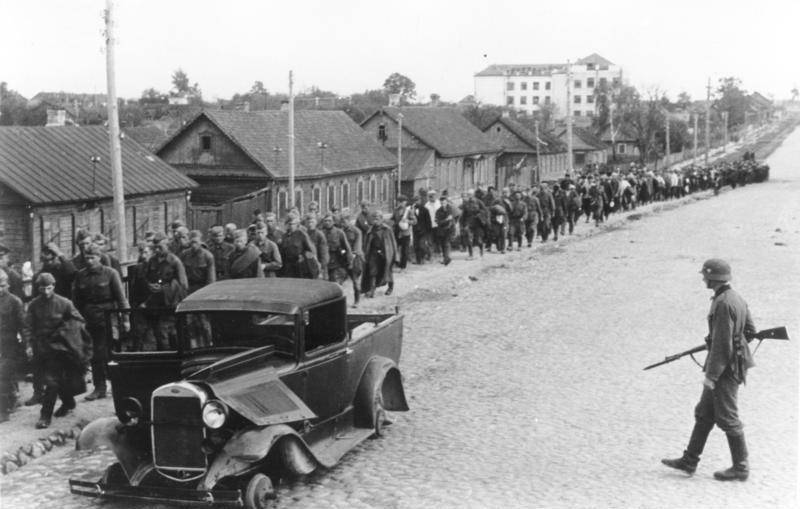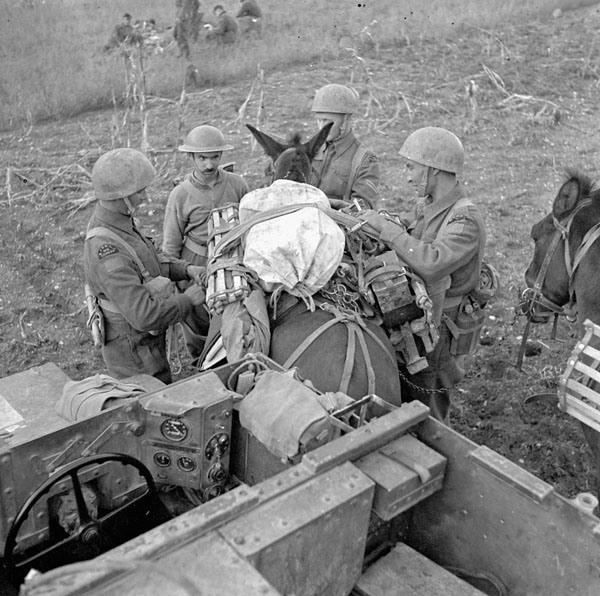Air Operations, East Indies
V Bomber Command B-25s and RAAF Hudsons attack Fuilaro, Timor.
[Air Operations, Europe
US 12th AIR FORCEITALY:
- NAAf opens an air offensive against railroad bridges throughout Italy in the hope of forcing the German Army in Italy to make greater reliance upon vulnerable coastal shipping and motor transport to keep its combat divisions at the front supplied.
- XII Bomber Command B-24s flying at low level attack a number of rail bridges.
- NATAF aircraft attack rail lines, trains, tunnels, gun emplacements, two landing grounds, an ammo dump, motor vehicles, and German troops.
- A 33rd Fighter Group P-40 downs an FW-190 at 1040 hours.
Air Operations, New Guinea
- 3rd Light Bombardment Group A-20s and RAAF aircraft attack Sattelberg.
- 348th Fighter Group P-47s down 6 F1M 'Pete' reconnaissance float plans near Wewak between 1045 and 1115 hours.
- Japanese bombers mount an unopposed attack against Finschhafen, but damage is minimal.
Air Operations, Solomons
- 24 XIII Bomber Command B-24s, 8 Navy PVs, 20 SBDs, 12 TBFs, 14 P-38s, 20 P-40s, and 2 F4Us attack antiaircraft batteries at the Kara and Kahili airfields on Bougainville. One PV is downed and 2 USAAF airplanes are lost in operational accidents.
- 1 347th Fighter Group P-38 downs 1 A6M Zero over Fauro Island at noon.
Diplomatic Relations
- The Foreign Ministers of the USSR, Molotov, the US, Cordell Hull, and Great Britain, Eden, meet in Moscow at the Second Moscow Conference. Chinese representative are admitted as and when the conference considers matters of specific interest to China. The meetings will last until November 1. Among issues discussed: the Russians are guaranteed that D-Day would be staged in May 1944, and the Soviets indicate for the first time that they would enter the war against Japan once Germany had been vanquished. To allay Russian fears, Britain and the U.S. agree that Germany would have to surrender unconditionally and no separate armistice would be concluded. Russia indicates its willingness to join in an 'international organization for peace'.
- The 3rd London Protocol is signed in Washington, extending American aid to the USSR until June 30, 1944. The United States will provide the Soviet Union with 2,700,000 tons of supplies through Russian ports on the Pacific and a further 2,400,000 tons through the Persian Gulf.
- The first PoW exchange between Germany and Britain takes place at Gothenburg, Sweden. About 5,000 Germans and 5,400 British and Imperial forces are involved in the exchange.
Eastern Front
The Soviets attack Pyatikhatki, to the west of Dnepropetrovsk. Konev's forces are storming out of the Kremenchug bridgehead and making for Krivoy Rog. Von Manstein is desperately bringing up reserves to meet this attack and give the forces holding the bend of the Dniepr time to pull back. In the Kiev sector the Soviet units are busily consolidating their bridgeheads north of the city. They capture Vishgorod as well.
SOUTHERN SECTORThe Soviets abandon their attacks at Veliki Bukrin. Vatutin immediately begins to move his forces surreptitiously away from this sector to Lyutezh, 100 miles to the north. Unknown to the Germans, the 3rd Guards Tank Army starts to pull out of the line and cross to the east bank of the river.
In the Dniepr elbow the Southwest Front takes Pyatikhati. Vishgorod also falls after a brief battle.
[Italy
In the US 5th Army's VI Corps area, the 168th Infantry of the 34th Division opens an attack on Dragoni before dawn and finds the enemy has withdraw. The 133rd Infantry finishes crossing the Volturno northeast of Dragoni. The 135th Infantry crosses to the southeast and heads toward Alife.
[Mediterranean
Over the next 2 days B-25s and Beaufighters attack convoys north of Crete. The German prison ship Sinfra is sunk. 566 men are rescued.
[Pacific
A US Navy communiqué reveals that since December 7, 1941, US submarines have sunk or damaged more that 400 Japanese vessels (319 confirmed sinkins). The tally would have been higher had it not have been for defective torpedoes, which often did not explode on hitting a vessel.
[Scenes from October 19, 1943
|
|
Captured Russian POW's near Minsk |
 |

